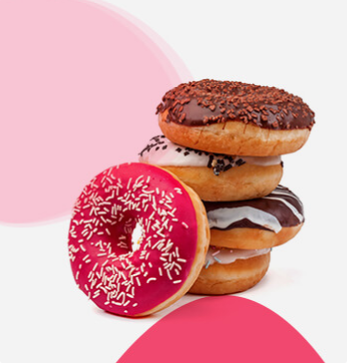KloudEats Blog

The Ultimate Guide on Creating the Right Menu for Your Restaurant
A well-crafted menu is more than just a list of dishes; it's a strategic tool that can significantly impact your restaurant's success. A thoughtfully designed menu can entice customers, showcase your culinary expertise, and drive sales. This comprehensive guide will walk you through the essential steps to create a menu that perfectly aligns with your restaurant's brand and attracts your target audience.
Understanding Your Target Audience
Before starting with menu design, gaining a clear and technical understanding of your target audience is essential. First, demographic analysis is key. Identify who your customers are. Younger diners may lean towards trendy, Instagram-worthy meals, while older customers may prefer classic, hearty dishes. Understanding their budgets can also help you price your menu appropriately.
Next, assess dietary restrictions and preferences. With the rise in special diets such as veganism, gluten-free, and keto, it's crucial to offer menu items that cater to these needs. If your target audience is health-conscious, offering lighter, nutritious options can increase appeal.
Additionally, geographic and cultural preferences are important. If you're located in an area with a specific cultural demographic, reflecting those flavors and traditions can build a connection with the local community.
By combining data-driven insights with customer-focused design, your menu can more effectively meet the preferences, expectations, and buying behaviors of your ideal audience.
Defining Your Restaurant's Concept and Branding
-1.png?width=850&height=500&name=Blogs%20Images%20(12)-1.png)
Your menu should align seamlessly with your restaurant's overall concept and branding. Consider your restaurant's theme, atmosphere, and the type of cuisine you serve.
For example, a casual, family-friendly restaurant might benefit from offering a diverse menu with a wide variety of dishes. This could include options for both kids and adults, such as classic comfort foods like burgers, pizzas, and pasta. Family-oriented eateries often focus on value, larger portions, and easy-to-share meals to accommodate larger groups and encourage frequent visits.
On the other hand, a fine dining establishment usually features a more refined, curated menu. Instead of a large selection of dishes, it may offer a smaller, rotating menu with seasonal ingredients and high-quality presentations.
Researching Food Trends and Market Demand
Staying updated on current food trends and consumer preferences is crucial for creating a menu that resonates with your target audience. Food trends are constantly evolving, influenced by factors such as cultural shifts, health consciousness, and sustainability movements.
Incorporating popular dishes or flavors, such as plant-based options, global cuisine fusions, or sustainable seafood, can help attract more customers who are looking for modern, trendy dining experiences. This proactive approach can keep your restaurant relevant and ahead of the curve in a highly competitive industry.
Menu Design and Layout
The design and layout of your menu can significantly impact how customers perceive your restaurant. Here are some key considerations:
-
Clarity and Readability: A well-structured menu should be easy to navigate with clear headings and subheadings that categorize the dishes logically. Font size matters, as overly small text can be hard to read, while larger fonts make it easier for customers to scan through options quickly.
-
Visual Appeal: High-quality images can significantly enhance the visual appeal of a menu. When customers see appetizing photos of dishes, it can trigger cravings and influence them to order more. Visual elements should be consistent with your restaurant’s brand, and the images should accurately represent the dishes being served.
-
Menu Structure: Organizing your menu into clear categories, such as appetizers, main courses, desserts, and beverages, helps customers easily find what they’re looking for. Logical sequencing of dishes also plays a role—starting with lighter items (like appetizers) and moving towards heavier, more substantial dishes (like main courses).
-
Pricing Strategy: Pricing should reflect both the cost of ingredients and preparation while ensuring a sustainable profit margin. Researching competitors’ pricing in the local market can help you stay competitive without undervaluing your offerings.
Balancing Variety and Focus
-1.png?width=850&height=500&name=Blogs%20Images%20(13)-1.png)
While offering a diverse menu can attract a wider range of customers, it's essential to maintain a focus on your restaurant's specialty or cuisine. Too many options can confuse customers and dilute your brand identity.
Menu Engineering Techniques
Menu engineering is a strategic approach to designing menus that maximize profitability. Some effective techniques include:
-
Menu Engineering: Place high-profit items at the top or bottom of the menu to draw attention.
-
Odd Pricing: Use odd pricing (e.g., $12.99 instead of $13) to create a perception of a lower price.
-
Descriptive Language: Use vivid descriptions to make your dishes more appealing and enticing.
-
Visual Cues: Utilize visual cues, such as asterisks or bold text, to highlight popular or premium items.
Testing and Iteration
Once you've created your initial menu, it's essential to test and iterate based on customer feedback and sales data. Track popular items, identify slow-moving dishes, and make adjustments as needed.
Online Menu Considerations
If you offer online ordering, ensure your online menu is visually appealing, easy to navigate, and compatible with mobile devices. Consider adding features like dietary filters and customizable options to enhance the customer experience.
Conclusion
Crafting a compelling menu is a strategic process that requires careful planning and consideration. By understanding your target audience, defining your brand, and utilizing effective menu design techniques, you can create a menu that attracts customers, drives sales, and contributes to the overall success of your restaurant.

Omar Hasan
Omar Hasan - October 1, 2024At KloudEats, Omar plays a pivotal role in bridging the gap between restaurant merchants and the ever-evolving world of online food delivery. He's committed to sharing valuable knowledge and tips through insightful blog posts, helping you navigate the dynamic landscape of the food industry.
Comments
Leave a comment
Latest Posts

How to Align Your Menu with Guests’ Preferences

Practical Steps to Increase Restaurant Sales
Newsletter
Subscribe to get the latest news, update and offer information. Don't worry, we won't send spam!
Newsletter
Categories


